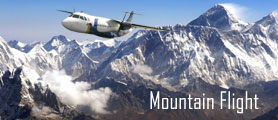Peak Climbing in Nepal
For the peak seekers climbing in Nepal is best. The Mountains of Nepal have stood as irresistible landmarks for the world's adventurers since Nepal opened its doors to visitors in the 1950s. Mountaineering can range from climbing the highest peak of the world to climbing lower peaks. Although by Himalayan standards the thirty five "Trekking Peaks" are reconsidered minor peaks. They nonetheless provide snow and ice climbing, and are technically quite challenging. Mountaineering teams can apply for a permit at the mountaineering section of the Ministry of Culture, Tourism and Civil Aviation or directly contact your local trekking agents.
Permits are one of the most important things required for peak climbing. Permits are issued in Katmandu by the Trekking Office but you should have a climbing guide. We organize all of the necessary services including peak permits, climbing guides and Sherpas. In addition we also provide relatively challenging snow and Ice climbing or winter expeditions.
For climbing minor peaks you do not have to have previous experience, however the climbing team must be prepared mentally as well as physically for the adventurous climb. All mountaineering trips are ran with professional mountain guides and Sherpa. We provide handsome services for our patrons and make your trek simple and easy. We will take care of you while you are in Nepal so you can enjoy trekking for yourself. The controls of these peaks have been entrusted to the Nepal Mountaineering Association (NMA) who issue permits and over see the regulation of ascent.
The seven peaks above 8000m high besides Mt. Everest are-- Kanchenjunga (8586m), Lhotse (8516m), Makalu (8463m), Cho Oyu (8201m), Dhaulagiri (8167m), Manaslu (8163m) and Annapurna (8091m). Nepal Mountaineering Association (NMA) is one of the authorized agencies in Nepal to give permission to climb mountains up to 6500 m. While, the mountaineering section of the Ministry of Culture, Tourism and Civil Aviation issues the permission for climbing on the peaks having elevation above 6500 m. The charge for peak climbing depends on the number of members involved in a group and the height of the mountain you want to climb as well as the other adventurous you want to organize in the mountain areas.
REGULATIONS:
Compared to expedition peaks, the regulations pertaining to trekking peaks are relatively simple. A permit is required, which is issued by the NMA upon payment of a royalty fee. Generally, our agency will be able to arrange for the issue of a trekking peak permit within 24 hours.
PREPARATION:
Preparation for climbing a trekking peak is far simpler than for an expedition. The climbing period for most of the trekking peaks rarely exceeds more than a few days so large amounts of base camp equipment are not usually required. In addition, due to their relatively low altitude, the amount of climbing equipment required is proportionally less. In general, preparation for climbing a trekking peak is little different from preparing for a trek.
SEASONS:
The lower altitude of a trekking peaks means that the ascent some of them is possible during the winter season as well as during the spring and autumn.
PERMITS AND ENTRY FEES:
The system of trekking permits that was in place has been abandoned for most of the general trekking areas. This means that for areas such as the Annapurna, Everest and Langtang regions trekkers no longer need to obtain permission before setting off. Peak climbing expeditions are usually both technically and physically very challenging activities. It requires considerable climbing skills and in Nepal it is usually done on mountains less than 8000 meters, where acclimatization is easier and more effort can be devoted to climbing skill rather than shere brute force to combat altitude.
Our objective is to serve the climbing community with helpful information, advice and practical services. On our website, you will find a wealth of information to help you to understand and decide on your climbing adventure. The biggest and loudest is not always the cool. We have put a lot of work to make our website useful to climbers, adventurers as well as any traveler to decide what is cool. Now it is up to you and we will be delighted if you find a cool climbing adventure just because you have visited our website. Please let us know what you think and how can we assist you.
PEAK RULES:
To climb a mountain in Nepal you need permission from the government. There are three different sets of peaks that are open, Expedition peaks and then group A and B trekking peaks. Any peak not on the list is closed for mountaineering. Nepal Mountaineering Association (NMA) has classified 33 peaks in Nepal as trekking peaks which range in height from 5650 to 6500 meters. There are 15 peaks in group A and 18 peaks in group B for trekking peaks and several hundred expedition peaks. Expedition peak rules have been refined over the years and now for peaks under 6500m no liaison officer is required. The liaison officer system is still incredibly corrupt, but at least there are better policies for garbage in place. The royalty paid to the government of Nepal for expedition peaks now varies with altitude and the season. Note all peaks in west Nepal are free but the paperwork still results in a file an inch thick.
EQUIPMENT AND SAFETY:
H.W. Tillman once said “In mountaineering one man's prudence is another man's poison”. If climbing with a trekking company group headed by a climbing guide, then harnesses and ropes will be used on every one of the peaks below, whether for crevasse danger or steep slopes. Nepali Climbing Sherpa are accomplished at fixing ropes but only recently are beginning to be trained how to rope up properly for glacier travel or to set up a belay, or belay using a climbing rope. The only way to find out if they do know is to ask the guide to demonstrate.
If climbing without a guide, recognizing your personal limits is important; this is the Himalaya after all. Some of these peaks are 'straightforward' but what this really means is that to be safe you don't need a shop's worth of carabiners, ice-screws, snow-stakes and rock racks - just a partner, rope, a few bits of protection, experience using this gear, good weather and an experienced guide.
The routes mentioned below cover the least difficult way up some of the main trekking peaks in the region. For proficient technical alpinists none of the routes are particularly challenging under good conditions. For safety-conscious amateurs, they have the potential to provide satisfaction and experience without excessive danger.
Ask the trekking company if all staff are insured for their appropriate roles, some cut corners. You can check all the Mountaineering Trekking Peaks of Nepal with their respective heights.
01: Group "A" NMA Expedition Peaks:
| S/N | Name of Mountain | Height (mt.) | Himalayan Range | District | Caravan Route |
| 01 : | Mt.Cholatse | (6440m.) | Mahalangur | Solukhumbu | Lukla-Namche-Pheriche-BC |
| 01 : | Mt.Cholatse | (6440m.) | Mahalangur | Solukhumbu | Lukla-Namche-Pheriche-BC |
| 02 : | Mt.Machermo | (6237m.) | Mahalangur | Solukhumbu | Lukla-Namche-Gokya-BC |
| 03 : | Mt.Kyazo Ri | (6186m.) | Mahalangur | Solukhumbu | Lukla-Namche-gokya-Bc |
| 04 : | Mt.Nirekha | (6186m.) | Mahalangur | Solukhumbu | Lukla-Namche-gokyo-BC |
| 05 : | Mt.Langsisa Ri | (6427m.) | Jugal | Rasuwa | Dhunche-Lantang-Langshis-ABC |
| 06 : | Mt.Ombigaichen | (6340m.) | Mahalangur | Solukhumbu | Lukla-Namche-Gokyo-BC |
| 07 : | Mt.Bokta | (6143m.) | Kanchenjunga | Dolakha | Charikot-Simigaon-beding-BC |
| 08 : | Mt.Chekijo | (6257m.) | Gaurishankar | Dolakha | Charikot-Simigaon-Beding-BC |
| 09 : | Mt.Phari Lapcha | (6017m.) | Mahalangur | Solukhumbu | Lukla-Namche-Machermo-BC |
| 10 : | Mt.Lobuje West | (6145m.) | Mahalangur | Solukhumbu | Lukla-Merala-BC |
| 11 : | Mt.Larkya Peak | (6249m.) | Manaslu | Gorkha | Gorkha-Samagoun-Lamjung Bc |
| 12 : | Mt.ABI | (6097m.) | Mahalangur | Solukhumbu | Lukla-Merala-BC |
| 13 : | Mt.Yubra Himal | (6035m.) | Langtang Himal | Rasuwa | Dhunche-Legberi BC |
| 14 : | Mt.Yala | (5732m.) | Langtang | Rasuwa | Ktm-Dhunche-Langtang-Bc |
| 15 : | Mt.Chhukung Ri | (5550m.) | Mahalangur | Solukhumbu | Ktm-Lukla-Namche-BC |
Fee Structure For Group "A" NMA Peaks:
Royalty for up to seven members (U.S Dollars) 500.00
Royalty for each additional member up to 12 person (U.S. Dollars) 100.00
02: Group "B" NMA Climbming Peaks:
| S/N | Name of Peaks | Height (m.) | Himal | Region | Route |
| 01 : | Shigu-Chuli(fluted peak) | (6501m.) | Annapurna Himal | Gandaki | ktm-pokhara-Tilkedhunga-Ghorepani-Tadhaani |
| 02 : | Mera Peak | (6654m.) | Khumbu Himal | Sagarmatha | ktm-jiri-shivalaya-Bhandar-sete- junbasi-nunthala-kharikhola-Lukla |
| 03 : | Kusum Kangru | (6367m.) | Khumbu Himal | Sagarmatha | ktm-lukla-namcheThame-Khumjung-B.C. |
| 04 : | Kwandge | (6011m.) | Khumbu Himal | Sagarmatha | Ktm-Lukla-Merala-Randimng-Hunde-B.C. |
| 05 : | Chulu West | (6419m.) | Manang | Gandaki | Ktm-Besisahar-Ngadi-Jagat-Dharapani |
| 06 : | Imja-tse(Island Peak) | (6160m.) | Khumbu Himal | Sagarmatha | ktm-Lukla-Namche-Tyangboche-Pangpoche-Dingboche-chhukang-B.C. |
| 07 : | Pharchamo | (6187m.) | Rolwaling Himal | Janakpur | Ktm-Dolkha-siguti-jagat-simigaon-Chagebukharka-Beding-Na-B.C. |
| 08 : | Lobuje | (6119m.) | Khumbu Himal | Sagarmatha | Ktm-Lukla-Namche-Thame-RermoPokhari-Gokya-dzonghla-B.C. |
| 09 : | Ramdung | (5925m.) | Rolwaling Himal | Janakpur | ktm-dolkha-Siguti gonger- beding-na |
| 10 : | Pisang | (6091m.) | Manang | Gandaki | Ktm-Beshisahar-Bahundanda-Chamja-Chame- Pisang B.C. |
| 11 : | Tharpu-Chuli-Tent Peak) | (5663m.) | Annapurna Himal | Gandaki | ktm-Pokhara-Dhampus-Langdrung- Ghandrung-Chomoro-Kuldi-B.C. |
| 12 : | Khongma-tse(Mehara Peak) | (5849m.) | Khumbu Himal | Sagarmatha | Ktm-Lukla-Namche-Dole-Mechermo-gokyo-Dughala-B.C. |
| 13 : | Ganja-la-Chul i(Naya Kanga) | (5844m.) | Langtang Himal | Bagmati | Ktm-Dhunche-Sysbru Goan- Lama hotel-Kyanjin Gomba-Ganjala B.C. |
| 14 : | Pokhalde | (5806m.) | Khumbu Himal | Sagarmatha | Ktm-Lukla-Namche-Dole-Gokya-Na-Thagna Cholapass B.C. |
| 15 : | Mardi Himal | (5587m.) | Annapurna Himal | Gandaki | Ktm-Pokhara-Hyangia-Dhiprang- Kharka-Mardi Basi Camp |
| 16 : | Paldor | (5896m.) | Langtang Himal | Bagmati | Ktm-Dhading-Ankhu khola-Rigaon-JAralang-Sertung-Krarka-somdang |
| 17 : | Hiunchuli | (6441m.) | Annapurna | Gandaki | Ktm-Pokhara-Chomrong-Bamboo-BC |
| 18 : | Chulu East | (6584m.) | Damodar | Gandaki | Ktm-Beisahar-Ngadi-Jagat-Dharapani-BC |
Fee Structure for Group "B" NMA Peaks
Group Size-Rate US$-Additional P/P US$
1-4 Persons-350.00 Only-
5-8 Persons-350.00 Plus-40.00 (Per person)
9-12 Persons-510.00 Plus-25.00 (Per person)
Note: Maximum number of members in team is 12.
Garbage deposit for all 33 NMA Peaks
An amount of US$250.00.should be deposited to NMA as garbage deposit to get permit to all 33 NMA peaks. The refund should make as per the provisions made by NMA.
Nepal Climbing Peaks
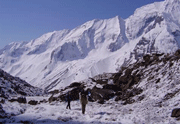
Tent Peak Climbing
Tent peak climbing has always been an attractive challenge for the climbers. Not only the peak but also the approach trek to Annapurna base camp is ever popular for its great mountain scenery. Tent Peak climbing main route is from Annapurna Sanctuary. Its altitude is (5695m) it is Called Tharpu Chuli in typical Nepali ...
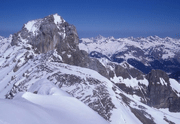
Mera Peak Climbing
Mera Peak is located at the east of Katmandu at the altitude of (6654m) Mera Peak is one of the most popular of Nepal's 18 "Trekking peak" From the trekker, the walk from Lukla through the Sherpa country of the remote Inkhu valley is an unforgettable experience, offering superb scenery
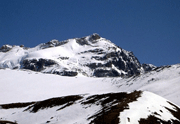
Yala Peak Climbing
Yala Peak is located at the (5500m) which is very beautiful. It is little bit easy trek among the other peak and does not require advance mountaineering experience. The valley is dominated by Langtang Lirung (7246m), the highest peak in the area. This trek with its optional climbs of Yala Peak and Naya Kanga offers a wonderful ...
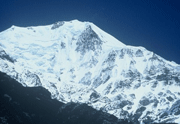
Chulu West Peak Climbing
These peaks are part of the Manang Himal, which are quite rightly included in the larger Damodar Himal, the eastern limit of which runs south from Chako and Peak (6687m) in a north-to-south direction along the Hunlung Khola, Nar Khola and Phu Khola. To the south the Marsyangdi Khola and the Mesokanta La bound it
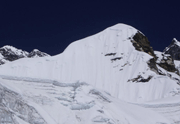
Island Peak Climbing
The mountain was named “Island Peak’ in 1952 due to its striking location in the middle of the Chhukung Valley. Like an Island on a sea of ice. It was named “Imja Tse” in the early ‘80s, though its original name is still more popular. Mt. Everest is its main trekking rout of Island Peak.
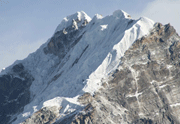
Lobuche Peak Climbing
Mt. Everest is Lobuche Peak main route. There are two distinct summits to Lobuche Peak (Lobuche East (6,119m) and Lobuche West 6,145m). Although a continuous ridge connects them, there is a sharp gap and a considerable distance between them.
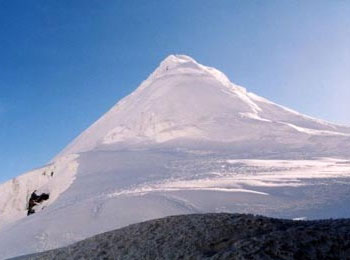
Parchamo peak (6187m) Climbing
The peak, which lies due south of the Tesi Lapcha, is unnamed on the Schneider Rolwaling Himal map, but is given a spot height of (6,273m) (20,581ft). The Mandala Lamasangu to Everest map calls the peak Parchoma, which is quite possibly a spelling mistake

